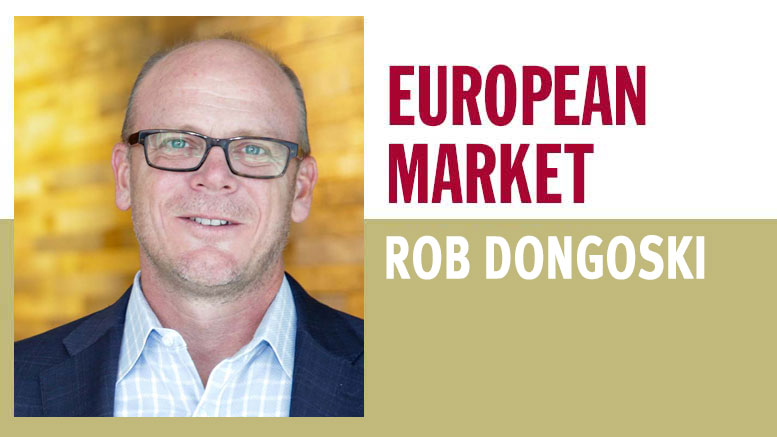Unlocking Funding to Finance a Food System Transformation
April 29, 2024 | 4 min to read
An astonishing one-third of food produced globally is lost or wasted, which contributes to chronic food insecurity for 238 million people. Transitioning to a regenerative food system could not only restore these systems and reduce greenhouse gases but also promote human health. However, funding for this transformation relies on public-private collaboration, as both farmers and consumers face resource constraints. Ultimately, overcoming short-term thinking is essential for sustainable investment in our food systems, crucial for health and environmental stability.

Originally printed in the March 2024 issue of Produce Business.
Currently, an astonishing one-third of all food produced worldwide is either lost or wasted. It’s difficult to overlook the evidence, and most pertinently, the data highlights that our global food system is still far from future-proof.
In 48 countries, an estimated 238 million people still experience chronic food insecurity. If we capture even half of all wasted food, we could narrow this gap and feed the whole world.
Unfortunately, food security is just one side of the coin — hundreds of millions more are suffering from diseases associated with malnutrition and the absence of clean water.
Today, some of the leading causes of death are associated with diet. To encourage good human health, we need to start transforming to a regenerative food system that protects both our well-being and the planet’s. A regenerative food system not only restores degraded food systems, and reduces greenhouse gases, but simultaneously encourages good human health — from the selection of chemicals used on farms and by processors to ingredient choices by food manufacturers.
As is the case with any global transformation, the costs are high, but the costs of inaction are even higher, and Kearney’s report Food For Thought: Financing The Food System Transition uncovers how we can deliver this mission so we all benefit from the investment required.
WHO ABSORBS THE COST?
We need to take stock of who absorbs the cost of our food-related health crisis today, and who is capable of funding the transition.
The burden currently falls on the public and private health sectors. In the case of the public sector, poor health is reflected in increasing taxpayer costs, stretched fiscal and infrastructure resources, and an overburdened healthcare system. For the private sector, it results in higher benefit payouts, loss of productivity, larger employee contributions to group plans and often, increasing insurance rates.
The statistics breaking down the costs of inaction paint a bleak picture. This includes $4.3 trillion in health and obesity costs; $130 to $850 billion in costs to businesses from lost productivity due to poor nutrition; $3 trillion in economic losses from 4.2 billion people affected by climate disaster events since 2000, with an additional $16.3 trillion in externalized environmental and socioeconomic losses.
The case for turning this around through a regenerative food system is financially sound, but, according to Kearney’s expert interviewees, most stakeholders are waiting for someone else to take the lead.
Realistically, neither farmers nor consumers can pay for a regenerative system. For farmers, there has to be a financial incentive and adequate investment support from business, while consumers’ choices are influenced by taste and affordability.
That leaves us with three ways to pay for a regenerative system. We can reduce costs within companies in the value chain, look to cut certain costs across the system, or we seek funding sources outside the system. To fulfill these ambitions, we need cross-sector and private-public collaboration to form the bedrock of the transformation. Thankfully, there is hope on the horizon from both a supply and demand perspective.
DRIVING TRANSFORMATION THROUGH PARTNERSHIPS
Practically, farmers and consumers are constrained by resources and capacity to drive investment at scale. As such, public and private organizations must harness their established infrastructure and market support to move the needle in the right direction before getting buy-in from consumers.
As mentioned, there is market demand for this transformation, and healthcare agencies, insurers, and even food and beverage companies are well placed to continue driving this demand and reap the benefits. For instance, when it comes to healthcare, hospitals and insurance agencies can advocate for “produce prescriptions” that leverage the fact that healthier food is a powerful treatment in and of itself.
There are two factors hindering consumer-driven demand: cost and confusion. Subsidizing consumer purchases can remedy this dilemma by making healthy food more accessible.
The Kearney’s Consumer Institute (KCI) found there are two main factors hindering consumer-driven demand: cost and confusion. Therefore, subsidizing consumer purchases can remedy this dilemma by making healthy food more accessible, as well as clearly defining what is actually healthy and sustainable.
Research found that $4.5 trillion per year could be unlocked during a regenerative transformation, so it’s clear businesses have a lot to gain. Now, it’s a case of collaborating to combine infrastructure and resources to galvanize investment.
While the costs of inaction are staggering and make a compelling case for change, unfortunately, we’ve yet to finance the regenerative transformation at scale.
Short-term incentives, from election cycles to investment models, have shifted our focus from the medium- and longer-term benefits that come with an initial investment in regenerative food systems.
What’s becoming apparent, in most industries, is that short-term thinking is both bad business and bad policy. Ultimately, food is at the heart of health, and we must overcome the financial stalemate to embrace our fundamental dependence on natural ecosystems — soil, water, microbes, climate — all of which can be achieved through a regenerative system.

Rob Dongoski is the food and agribusiness leader at Kearney’s Consumer Institute in London.
2 of 10 article in Produce Business April 2024

